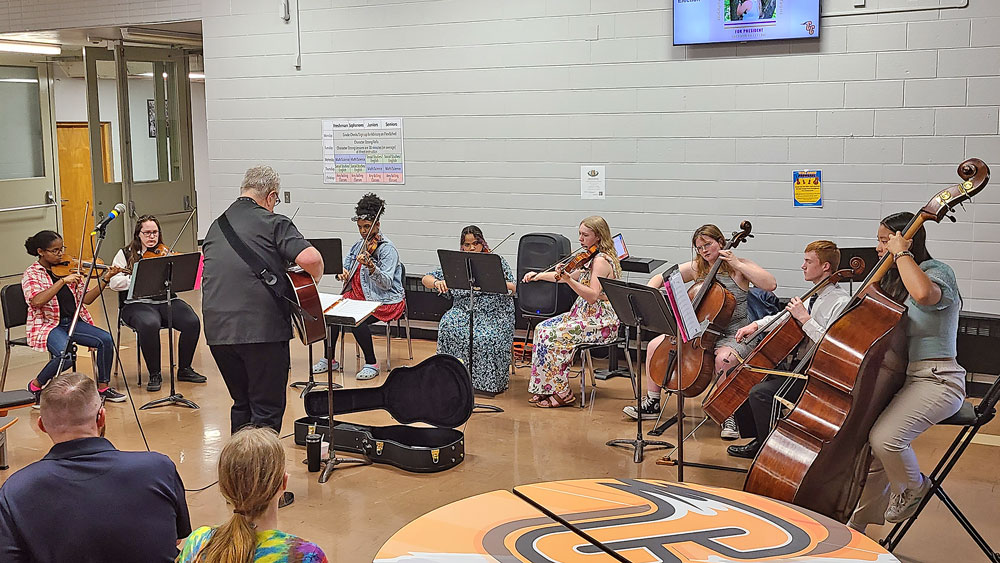No surge in reports of missing persons in Floyd County
By Kelly Terpstra, kterpstra@charlescitypress.com
Statewide, the numbers remain roughly the same.
There are more than 4,300 juveniles a year in the state who are reported missing, according to a recently released statement from the Iowa Department of Public Safety.
That breaks down to almost 12 people a day under the age of 18 who come up missing in Iowa — a statistic that does not tend to fluctuate to a severe degree, according to the agency.

High–profile missing persons cases within the last four months across Iowa have generated national headlines. But local law enforcement authorities within Floyd County said reported cases in the area, like statewide counts, have not seen an uptick or increase.
Charles City Police Captain Brandon Franke, who has been on the force for 18 years, said there have been 10 reported cases of missing persons in Charles City since February of this year.
“We haven’t noticed any huge increase or anything like that. I can’t think of one since I have been here where we haven’t found the person,” said Franke.
Franke said the vast majority of his department’s calls for trying to locate someone missing are runaways who left of their own free will.
“They’re not in danger. They end up either coming home or at least calling family members,” said Franke.
Lieutenant Brian Tiedemann of the Floyd County Sheriff’s Department said the number of reported missing person cases in the last 10 years has spiked somewhat, but on average there are about two a month reported to his office.
That’s the reality in Floyd County, but browsing social media and reading about the disappearances of University of Iowa student Mollie Tibbetts and 16-year-old Jake Wilson of La Porte City can sometimes paint a different picture in some people’s minds.
The Poweshiek County Sheriff’s Office held a press conference Tuesday afternoon to give an update on the Tibbetts disappearance. They said that more than 200 leads have been investigated so far, with 30 to 40 investigators working each day.
According to the Iowa DPS Missing Person Information Clearinghouse, there have been 66 people reported missing in the month of July across the state of Iowa. Of those 66, 48 are juveniles, with a majority of those more than likely being runaways, according to the Iowa DPS.
Those statistics are right in line with what is generally reported each month by the state agency. Even after three days since those statistics were posted, 13 of the reported cases had been solved as of Monday, all but three being persons under the age of 18.
That doesn’t make disappearances any less alarming.
Tibbetts, a 20-year-old from Brooklyn, vanished on July 19 and has not been seen since. The same can be said about Wilson, a 16-year-old who went missing on April 7.
Floyd County is no stranger to high profile cases, nor is the area.
It’s been more than 23 years since KIMT news anchor Jodi Huisentruit failed to show up for work at her job at the Mason City television station on June 27, 1995. She is believed to have been abducted and was declared legally dead in May of 2001.
Five-year old Evelyn Miller disappeared on July 1, 2005, just outside an apartment in rural Floyd County more than 13 years ago. Her body was found five days later by kayakers on the Cedar River not far from where she lived. Her mother’s fiance, Casey Frederiksen, was later charged and convicted of her murder. He received two life sentences in 2015.
Fast forward three months to October of 2005. That’s when Floyd County authorities learned about the disappearance of Jesse Patchin, 20, of Waterloo. It was later found that J.D. Raymond of Clarksville stabbed Patchin to death in rural Floyd County in a dispute over drugs. Patchen’s body was not discovered until January of 2006 in a rural, wooded area in southern Floyd County
Tiedemann was part of both those headline–grabbing Floyd County investigations and countywide searches more than a decade ago. He talked about how those horrific cases can amplify attention and lead people to believe there are more abductions going on than there really are.
“They’re a lot like a firecracker – they’re going to pop here and then all of a sudden six months down the road no one’s talking about it again,” said Tiedemann.
As much as social media can help publicize and get the word out to the public about missing people, Tiedemann said it can also play a role in the actual disappearance of a loved one.
“Children are being lured away because of social media,” said Tiedemann. “If you have an adolescent or juvenile that is feeling bullied, they find a friend, a sympathetic ear on social media. Your sympathetic ear could very easily be a 35-year old predator.”
While juvenile runaways comprise the majority of reported missing person cases, those people who are abducted are usually taken by someone they know, like family acquaintances, according to Tiedemann.
“It’s no longer a stranger/danger world,” he said.
Immediacy is sometimes the key in finding a person’s whereabouts after a report is filed. That’s where the misconception that you have to wait a certain amount of time before reporting someone missing can waste valuable time.
“There’s actually no time frame,” Franke said. “I know a lot of people think you have to wait 24 hours. But that’s not the case. If you haven’t seen someone or they should have been there and they haven’t seen them you can report that right away and we’ll start looking into it.”
Law enforcement treats each missing persons report on a case–by–case basis.
“Obviously, every case is different,” Franke said. “If there is some circumstance that seems that someone could be in danger, we’re going to treat it different than if the person just got in their car and drove away and they haven’t seen them. We’re still obviously going to look for either one.”
The steps taken by law enforcement after a call has been placed about a missing person are critical to the investigation. All of the missing person’s information is collected and Franke said police start contacting relatives and friends to get a better understanding of what has taken place.
Once the person is actually listed as missing, a family member or friend fills out a form. That form is then given to dispatch, who then puts that data into a nationwide system.
Franke’s best advice for someone searching for a lost friend or relative is to stay home. Franke said the person may come back to his or her residence to retrieve clothes or personal belongings. Plus, Franke said, if everybody is out looking for the person, they can come back home and not be seen. People should always have their cellphone on them in an attempt to talk to the lost or missing person.
There is a distinct difference between an Amber Alert and a missing persons case in terms of protocol.
“The main thing on that is you need to have a suspect with a description to put out,” said Franke about Amber Alerts.
Tiedemann’s advice to people in an effort to prevent any person from being abducted or harmed is to be cognizant of the environment around you.
“I always tell people that they need to be — this goes with crime in itself — be aware of your surroundings. If you see a strange vehicle in your neighborhood, take note of it,” said Tiedemann. “We’re not living in the 1970s in Floyd County.”









Social Share